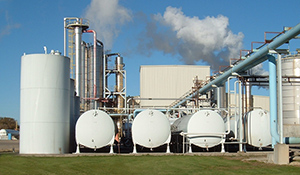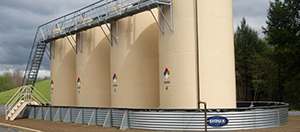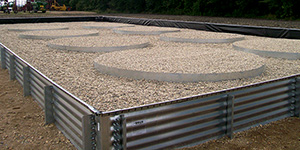
What We Do / Consulting / Regulatory Compliance
Regulatory Compliance
 WCEC assists clients with a variety of environmental and regulatory compliance issues under Federal, state, and local regulatory programs, including the following:
WCEC assists clients with a variety of environmental and regulatory compliance issues under Federal, state, and local regulatory programs, including the following:
-
Facility Response Plans (FRP)
-
Spill Prevention, Control and Countermeasure (SPCC) Plans
-
National Pollutant Discharge Elimination System (NPDES) permits
-
Storm Water Pollution Prevention Plans (SWPPP)
-
Other Regulatory Compliance Issues
Facility Response Plans (FRP)
Are you the owner or operator of a “substantial harm” facility? A “substantial harm” facility is a facility that, because of its location, could reasonably be expected to cause substantial harm to the environment by discharging oil into or on navigable waters or adjoining shorelines. The FRP helps an owner or operator develop a response organization and ensure the availability of response resources (i.e., response equipment, trained personnel) needed to respond to an oil discharge. WCEC has experienced staff that can help you determine if your facility is subject to the FRP rules and assist you in writing a plan.
Spill Prevention, Control and Countermeasure (SPCC) Plans
 WCEC can help you determine if your facility meets the three primary SPCC Plan criteria: 1) the facility must be not be transportation related; 2) it must have an aggregate aboveground storage capacity greater than 1,320 gallons or a completely buried storage capacity greater than 42,000 gallons; and 3) there must be a reasonable expectation of a discharge into or upon navigable waters of the United States or ad-joining shorelines. In addition, SPCC plans developed by WCEC are certified by one of our Professional Engineers (PE), as required by federal law.
WCEC can help you determine if your facility meets the three primary SPCC Plan criteria: 1) the facility must be not be transportation related; 2) it must have an aggregate aboveground storage capacity greater than 1,320 gallons or a completely buried storage capacity greater than 42,000 gallons; and 3) there must be a reasonable expectation of a discharge into or upon navigable waters of the United States or ad-joining shorelines. In addition, SPCC plans developed by WCEC are certified by one of our Professional Engineers (PE), as required by federal law.
Secondary Containment Systems
 As an added value to our customers that own and operate aboveground storage tanks containing oil, petrochemical and fertilizer products, WCEC is a distributor for Sioux Steel Dura Life® Containment Systems and can provide turn-key installation services.
As an added value to our customers that own and operate aboveground storage tanks containing oil, petrochemical and fertilizer products, WCEC is a distributor for Sioux Steel Dura Life® Containment Systems and can provide turn-key installation services.
The double bolted corrugated steel walls minimize installation time, and almost eliminate maintenance. A variety of liners are available to meet the specific containment needs and chemical makeup of your product.
 The square, oblong, round, or rectangular systems will fit into almost any area, and are available in 25”, 33”, 45”, and 57” heights. Future expansion and modifications of systems can be completed by adding panels and liner.
The square, oblong, round, or rectangular systems will fit into almost any area, and are available in 25”, 33”, 45”, and 57” heights. Future expansion and modifications of systems can be completed by adding panels and liner.
Created exclusively for above ground storage installations, the Ground Guard version of these containment systems does not require any ground penetration for system installation. This is a perfect alternative for sites where underground installation of support posts is not an option.
Contact Us for more information about our secondary containment products and services.
National Pollutant Discharge Elimination System (NPDES) permits
Compliance with U.S. Environmental Protection Agency, Minnesota Pollution Control Agency (MPCA), and other state stormwater regulations is a critical component of industrial and construction regulatory compliance programs. National Pollutant Discharge Elimination System (NPDES) Permits are required to prevent the transport of sediment-laden storm water and other visible and non-visible construction related pollutants into local surface waters, including municipal storm drains. WCEC’s water quality staff has extensive expertise in preparing General Industrial Stormwater Permit applications, General Construction Stormwater Permit applications and facility and site-specific Stormwater Pollution Prevention Plans (SWPPP). Our working knowledge of current state and federal NPDES General Permitting requirements guides our clients through the application and implementation process in a cost-effective and timely manner.
Storm Water Pollution Prevention Plans (SWPPP)
While the permit requirements vary on a state by state basis, at a minimum, project owners must create a Stormwater Pollution Prevention Plan (SWPPP) that identifies potential pollutants, describes actions to be taken at the site to minimize the risk of pollutants leaving the site, and specifies an inspection program to monitor the effectiveness of the SWPPP and conditions on site on a recurring basis. WCEC prepares site-specific documents that, (1) Identify potential sources of stormwater pollution on a construction, industrial and/or municipal site; (2) describe stormwater control measures and Best Management Practices (BMPs) that will be used to reduce or eliminate pollutants in stormwater discharges from the site; and, (3) identify the procedures the operator will implement to comply with the terms and conditions of the site-specific or general permit.
WCEC SERVICES
Best Total Solution
Consulting
Turn-key environmental services at transportation, industrial and agriculture sites throughout the midwestern and western US.
Read MoreEmergency Response
Responsive and reliable, safe and practical. WCEC is on your team before, during and after an environmental emergency occurs.
Read MoreIndustrial Service
Petroleum fuel services provided by industry experts with unmatched experience, integrity and customer service.
Read MoreInformation Technology
Info Link provides a wide array of internet and networking services to meet the needs of today's business and home users.
Read More



